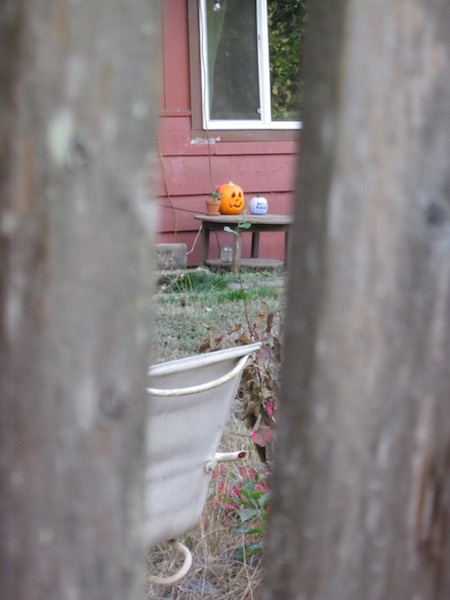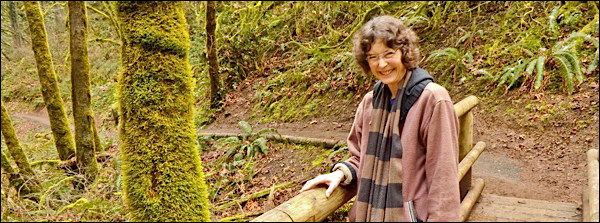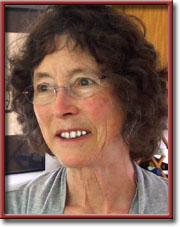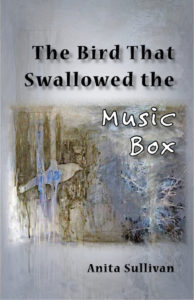Spiritual Impressions Upon An Autumnal Shroud
“I pace my living room, imagining myself as a photographer: a person with a real, adjustable camera, a tripod, various lenses and light-focusing gimmicks (not too many), but nothing changes. There is nothing to keep the scene across my driveway from being just part of something larger that is flowing endlessly through streets and into other people’s yards, past their architecturally unimagined houses, beside their asphalt pavements, interrupted mercifully at irregular intervals by trees and gardens.”—Anita Sullivan
On The Other Hand
By Anita Sullivan

EUGENE Oregon—(Weekly Hubris)—November 2018—Imagine a fence beside a driveway. An unfinished, six-foot wooden fence turned gray by years of direct exposure to sun and rain. A fence dappled with lichen. A fence with many of its boards warped sideways. A fence so typical throughout the suburban neighborhoods of the city that nobody would ever find reason to stop and look at it, much less raise a camera to record it in situ with all its immediate unremarkable surroundings.
On this side of the fence are three trash bins in drab green, drab blue, and drab gray. The driveway gravel is overgrown with weeds. There are three dead or half-dead or six-seventeenths dead cherry trees on either side of the drabs, one of them this side of the fence, the other two in the neighbor’s yard. Behind the two cherry trees in that yard, stands a dark red duplex with its vinyl-framed windows looking blackly north, towards my house. Finish off with a scattering of outdoor lights strung on flimsy wires between house and fence, the electric meter beside one window, various pipes and cables interrupting the slaty gray sheen of the roof, and what you have is . . .
. . . a very dull and uninteresting, unhierarchical, confusing, downright heart-sinking mediocrity of a view to look at every day from my living room window or, alternatively, from the front stoop. My challenge to the photographer: How can you compose this into a photograph worth taking?
It is not permitted to zero in on a single nail or a single board. It is not permitted to photoshop a panoramic shot and infuse it with wildly magical light so that the fence assumes the mythic status of the Great Divide. What could be right here that we are missing because we don’t have the advantage of the camera’s eye?
Should you (the photographer) be permitted to hire a beautiful model in some sort of swirly or clingy outfit to come and strike a dramatic pose somewhere in the photo, would that give a sense of focus and hierarchy to an otherwise flat and endlessly uneventful view? She might be installed, for example, at precisely golden-section ratio distance from the outer limits on either side. Maybe this would turn the photo into a study in contrast: glowing vs. dull; mediocre vs. highly functioning; ordinary vs. sublime; structured vs. slack. Without such outside assistance, the scene seems doomed to remain terminally and fundamentally anonymous.
Is there nothing in this humble driveway vista that either a lucky or highly skillful photo could bring to light? What does it take to lift normal ugliness out of its trance and restore to it the original connection it surely still holds with the gratuitous beauty of the natural world?
I pace my living room, imagining myself as a photographer: a person with a real, adjustable camera, a tripod, various lenses and light-focusing gimmicks (not too many), but nothing changes. There is nothing to keep the scene across my driveway from being just part of something larger that is flowing endlessly through streets and into other people’s yards, past their architecturally unimagined houses, beside their asphalt pavements, interrupted mercifully at irregular intervals by trees and gardens. Here I confront the residue. Here remains only the half-dead, the leached-out, the drought-ridden, the pallid, the barely-utilitarian. Not even achieving the hellish vigor of full-bore ugliness. How does the photographer select from this unappetizing panorama, something worth raising a camera for? Why should she?
Oh, but it is essential, so essential. If not this, then what? Are we unable to photograph again what we photographed before because we’ve exhausted all the ways of seeing straight into a segment of collected materials without assistance from an outside narrative? Does beauty not dwell in everything, to keep it alive, and do we not need to keep renewing our ancient friendship with this elusive sylph? Even if we don’t know how its magic works, we feel ourselves hungering for it, and drive ourselves mad running all over the place to assemble a bunch of stuff that will fill the gap we feel every time we look out the window at our eternally deteriorating fence.
Never mind all that, Dear Photographer, please answer my question: How Can You Make This Into A Photograph Worth Taking? Rephrase the question any way you like, but bring me a picture that will
take a weight off my heart.
So, I go out the front door and stand a bit wanly on the concrete stoop that separates me from the weeds along this side of the driveway. I wiggle my head from side to side, hoping for a change in perspective. And suddenly, framed by a gap between two fence boards, I spy a little plastic pumpkin perched on a table beneath a window. It glows unnaturally in the cloudy light. We’re two weeks away from Halloween, but for all I know this little guy has been there for months, just as some people never take down their Christmas lights, or put away their patio furniture in the wintertime.
Suddenly a “scene” falls into place, and I feel the symbolic part of my soul clicking away like an abacus, trying to group things into a new whole. The fence swings itself into a protective curling gesture; its mottled pale, paler, dark, darker surfaces now present themselves as spiritual impressions upon a shroud, or as the wall of an old barn, or—or—as simply a fence now revealed as wise-elder, having caught the brunt of many weatherings and never faltered in its stalwart role, to unite, to divide, to protect, to be, and today to allow one small light to appear to its best advantage among the materials at hand.
![]()
To order Anita Sullivan’s book, The Bird That Swallowed the Music Box, click on the book cover below.



2 Comments
Diana
Anita mou, this is a little jewel. I love the way your mind works, watching you stare out that window, pacing back and forth to make something distinctive about it, and then the little pumpkin that adds a note of humor, color, life, even a kind of beauty. And of course, it’s your writing that supplies the beauty. And the interest. But your eye and that were seeking the little something that turns the everyday into art.
Now for your new career as a photographer! xox
Anita Sullivan
Oh, I treasure these words coming from you, Diana! And yes, my son, who is a sometime professional photographer, is going to gift me with a real camera, complete with instructions (and the patience to tell me over and over). Time to climb up that darned learning curve again.